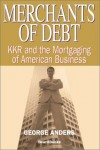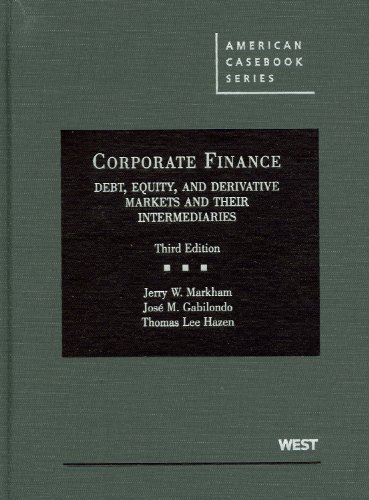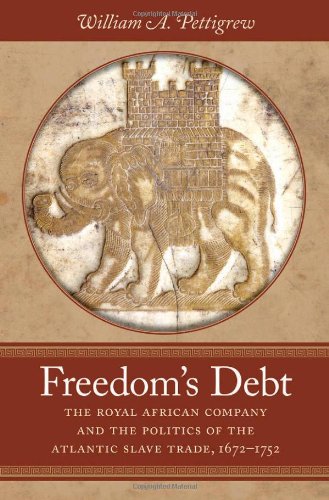[American] Videos
For more than a decade, Henry Kravis and George Roberts have been archetypes, first of Wall Street’s boom years and then of its excesses. Their story and that of their firm – the biggest, most successful and most controversial participant in the age of leverage – illuminates an entire era of financial high jinks and speculative mania. Kravis and Roberts wrote their way into the history books by concocting one giant takeover after another. Their technique: the leveraged buyout, an audacious way to acquire a company with borrowed money, borrowed management – and a lot of nerve. Their firm, Kohlberg Kravis Roberts & Co., dominated the Wall Street scene in the late 1980s, acquiring one Fortune 500 company after another, including Safeway, Duracell, Motel 6, and RJR Nabisco. This book draws on more than 250 interviews, including recurring access to the central figures and their KKR associates, as well as confidential documents and private correspondence to couch giant financial issues in human terms. “Merchants of Debt” shows how pride, jealousy, fear, and ambition fuelled Wall Street’s debt mania – with consequences that affected hundreds of thousands of people. The book addresses 3 questions – why did American business become so enchanted by debt in the 1980s? How exactly did Kravis and Roberts rise to the top of the heap? What have buyouts, especially KKR’s deals, done to America’s economic strength? In the tradition of “Barbarians at the Gate” and “The House of Morgan” this is a saga that takes readers behind closed boardroom doors to show how star-struck young bankers, ruthless deal-makers, and nervous CEOs changed one another’s lives – and the whole American economy – over a 15 year span.
Is it still worth it for low-income students to attend college, given the debt incurred? This book provides a new framework for evaluating the financial aid system in America, positing that aid must not only allow access to higher education, but also help students succeed in college and facilitate their financial health post-college.
• Reveals the inadequacy of the scope of the current educational and economic policy debates, including moves to funnel low-income children toward two-year degrees, structure alternative debt repayment schedules, and constrain increases in college tuition
• Answers the question: “Does the student who goes to college and graduates but has outstanding student debt achieve similar financial outcomes to the student who graduates from college without student debt?”
• Examines an important subject of interest to educators, students, and general readers that is related to the larger topics of education, economics, social problems, social policy, public policy, debt, and asset building
• Provides empirical evidence and theoretical support for a fundamental shift in U.S. financial aid policy, from debt dependence to asset empowerment, including an explanation of how institutional facilitation makes Children’s Savings Accounts potentially potent levers for children’s educational attainment and economic well-being, before, during, and after college
Story of Kolberg Kravis Roberts.
Product Features
- Used Book in Good Condition
Americans as a whole view themselves as reasonably prudent and sober people when it comes to matters of money, reflecting the puritan roots of the earliest European settlers. Yet as a community, we also seem to believe that we are entitled to a lifestyle that is well-beyond our current income, a tendency that goes back to the earliest days of the United States and particularly to get rich quick experiences ranging from the Gold Rush of the 1840s to the real estate bubble of the early 21st Century.
Inflated examines this apparent conflict and makes the argument that such a world view is so ingrained in us that to expect the United States to live in a “deflated” world is simply unrealistic. It skillfully seeks to tell the story of, money inflation and public debt as enduring (and perhaps endearing) features of American life, rather than something we can one day overcome as our policy makers constantly promise.Features interviews with today’s top financial industry leaders and insiders.Offer a glimpse into the future of the Federal Reserve and the role it will play in the coming yearsExamines what the future may hold for the value of the U.S. dollar and the real incomes of future generations of Americans
The gradual result of the situation we find ourselves in will inevitably lead to inflation, loss of economic opportunity, and a decline in the value of the dollar. This book will show you why, and reveal how we might be able to deal with it.
Winner of the 2013 C. Hugh Holman Award
Product Features
- Used Book in Good Condition
In this lively history of consumer debt in America, economic historian Louis Hyman demonstrates that today’s problems are not as new as we think.
Borrow examines how the rise of consumer borrowing—virtually unknown before the twentieth century—has altered our culture and economy. Starting in the years before the Great Depression, increased access to money raised living standards but also introduced unforeseen risks. As lending grew more and more profitable, it displaced funds available for business borrowing, setting our economy on an unsustainable course. Told through the vivid stories of individuals and institutions affected by these changes, Borrow charts the collision of commerce and culture in twentieth-century America, giving an historical perspective on what is new—and what is not—in today’s economic turmoil.
A Paperback Original
Product Features
- Borrow
- The American Way of Debt
- Louis Hyman
This casebook introduces students to the major instruments issued by corporations for funding and risk-management, including money market instruments, bonds and notes, junior and senior equity, government securities, futures, options, swaps, and other financial derivatives. Moving beyond the issuance market and instrument design, the book situates these instruments in their trading markets, giving students a comprehensive understanding of financial markets. The selected cases and materials highlight financial history, market structure, accounting standards, and a lawyer’s professional standards. Chapter objectives help students to track their progress. This edition has been updated to reflect recent financial reforms.
In the years following the Glorious Revolution, independent slave traders challenged the charter of the Royal African Company by asserting their natural rights as Britons to trade freely in enslaved Africans. In this comprehensive history of the rise and fall of the RAC, William A. Pettigrew grounds the transatlantic slave trade in politics, not economic forces, analyzing the ideological arguments of the RAC and its opponents in Parliament and in public debate. Ultimately, Pettigrew powerfully reasons that freedom became the rallying cry for those who wished to participate in the slave trade and therefore bolstered the expansion of the largest intercontinental forced migration in history.
Unlike previous histories of the RAC, Pettigrew’s study pursues the Company’s story beyond the trade’s complete deregulation in 1712 to its demise in 1752. Opening the trade led to its escalation, which provided a reliable supply of enslaved Africans to the mainland American colonies, thus playing a critical part in entrenching African slavery as the colonies’ preferred solution to the American problem of labor supply.
Buffett became a billionaire on paper when Berkshire Hathaway began selling class A shares on May 29, 1990, when the market closed at $7175 a share. In 1998…









